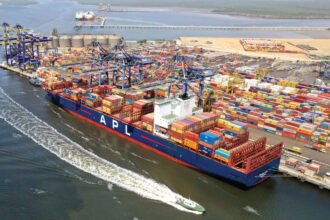Maria Mansab
The Pakistan Tehreek-e-Insaf (PTI) has cemented itself as a party that consistently places political ambitions above national stability and the welfare of its citizens. From the prolonged 126-day sit-in in 2014 to the May 2023 riots and the November 2024 protests, PTI’s actions have inflicted significant economic and reputational damage on Pakistan. This persistent culture of protests underscores a legacy where vested interests overshadow the broader needs of the country, resulting in substantial economic loss and tarnishing Pakistan’s international reputation.
The 2014 sit-in on Constitution Avenue, a hallmark of PTI’s protest culture, cost Pakistan an estimated Rs. 547 billion. According to a report submitted to the Supreme Court, the economic losses included a 4.3% depreciation of the Pakistani rupee. This devaluation added Rs. 228 billion to the country’s external public debt. The Karachi Stock Exchange saw a sharp decline of 2,000 points and a stock value decline of Rs319bn. Foreign Direct Investment (FDI) also dropped, decreasing from $114 million in July 2014 to $92 million in August 2014.
These disruptions extended beyond financial markets. Over 380 containers were affected, leading to a 25% rise in production costs and price hikes in essential commodities. The protests caused a 2% reduction in the country’s overall GDP, while additional Rs. 357.6 million were allocated to law enforcement to maintain order. The Capital Development Authority reported damages to state property amounting to Rs. 5 million.
Furthermore, 200,000 students were unable to begin their academic year on time, and the disruption delayed crucial international engagements, including Chinese President Xi Jinping’s visit, which postponed the signing of the China-Pakistan Economic Corridor (CPEC) Memorandum of Understanding (MoU). Declining foreign exchange reserves have declined to $13.521bn from $13.926bn further straining the economy.
The economic chaos resurfaced during the May 2023 riot. The protests caused damages of Rs. 1 billion in Lahore alone, with total losses in Lahore and Islamabad exceeding Rs. 12 billion. Government property worth Rs. 250 million was damaged in Islamabad. At the same time, the Pakistani rupee hit a record low of 298.93 against the US dollar in the interbank market, further exacerbating the nation’s economic woes.
The November 2024 protests marked yet another chapter in PTI’s history of economic disruption. Research by the Beltway Grid Policy Center’s report, “Democracy Under Siege: Economic Fallout and Diplomatic Implications of Protests in Pakistan,” revealed that these protests caused daily economic losses of Rs. 190 billion, amounting to over Rs. 3 trillion in total. The retail and hospitality sectors saw revenues decline by more than 50% in Islamabad and Rawalpindi, with many businesses reporting irrecoverable losses.
According to a Ministry of Finance report, the recent PTI protest in Islamabad caused an estimated daily economic loss of Rs190 billion. With an estimated daily loss of Rs 144 billion to the country’s GDP, Analysts have projected that these protests have reduced Pakistan’s GDP growth by 0.8% for the fiscal year. Additionally, disruption in exports due to strikes results in a daily loss of Rs 26 billion, while foreign direct investment (FDI) has also been negatively affected, with a daily loss of Rs 3 billion and a decline of over 25% in FDI inflows during the protest period.
The agricultural and industrial sectors have suffered daily losses of Rs. 26 billion and Rs. 20 billion, respectively. Additionally, the Pakistani rupee has depreciated by 6%. The Pakistan Stock Exchange recorded a loss of 3,505 points, with market capitalization declining by over 8% within two weeks. Furthermore, Protesters have targeted government buildings, vehicles, and private property, causing damages estimated at Rs 800 million, including Rs. 280 million to Safe City cameras.
Beyond immediate economic losses, these protests have harmed Pakistan’s international reputation, prompting delegations from China and Belarus to postpone their visits. Over the past decade, recurring demonstrations have cumulatively cost Pakistan Rs. 12 trillion. These disruptions have severely impacted trade, industry, and foreign investments while fostering public unrest and political brinkmanship, undermining Pakistan’s economic and social stability.
Pakistan can draw valuable lessons from countries like Singapore and Australia, which have implemented strict measures to regulate public demonstrations. Singapore’s public assembly laws require permits, prohibit foreign sponsorship, and impose fines and imprisonment for violations. Fines for violating these laws can reach up to US$7,228, with imprisonment of up to six months for severe breaches. Similarly, in Australia Melbourne, Federation Square hosts protests, requiring permits for large assemblies. Recent legislation has increased penalties for obstructing public spaces, ensuring minimal economic impact while preserving the right to peaceful assembly.
Pakistan must adopt similar measures to curtail the damaging legacy of protest-driven politics. Instituting a robust permit system, establishing designated protest zones, and enforcing strict penalties for economic and property damages are essential steps. Educating the public about the economic consequences of political unrest and prioritizing the welfare of citizens over political gain can pave the way for a more stable and prosperous Pakistan.
The PTI’s persistent reliance on protests for political leverage has inflicted severe economic and social costs on the nation. By learning from international best practices, Pakistan can protect its socio-economic fabric, restore investor confidence, and ensure a future where political differences are resolved without jeopardizing the country’s stability and growth.










